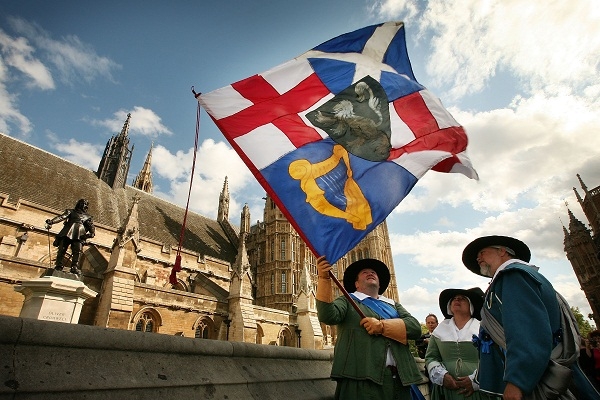‘How the War Began’ by Thomas Jordan, 1663.
‘I’ll tell you how the war began:
The holy ones assembled
(For so they called their party then
Whose consciences so trembled).
They pulled the bishops from their seats,
And set up every widgeon;
The Scotch were sent for to do feats
With oat-cakes and religion.
They plucked communion-tables down,
And broke our painted glasses;
They threw our altars to the ground,
And tumbled down the crosses;
They set up Cromwell and his heir,
The Lord and Lady Claypole;
Because they hated Common Prayer,
The organ and the maypole.’
Three-hundred and fifty years ago, in September 1662, congregations in churches all over England were getting used to hearing services from the new Book of Common Prayer. The reintroduction of the traditional services of the Church of England, which had been done away with after Charles I’s defeat in the Civil Wars, marked the culmination of the Restoration. Charles II had arrived in England two years earlier after the republican regime had spectacularly collapsed. For royalists the transformation seemed miraculous. The King was returned, God was in his heaven, and all was well with the world.
Royalist myths about the Civil Wars and the Restoration have proved remarkably resilient and continue to shape many people’s ideas about Roundheads and Cavaliers, merry monarchs, and a time when Christmas was banned. This poem by Thomas Jordan, published shortly after the Restoration, played a part in the establishment of that mythology. According to it, the opponents of the King were all Puritans (‘The holy ones… whose [religious] consciences so trembled’). They were motivated by religious fanaticism marked by iconoclasm (smashing the ‘painted glass’ in church windows) and intolerance of the religion, music, and pastimes of the common people (‘they hated Common Prayer, the organ, and the maypole’). And they only won because they treacherously invited the even grimmer Scots to invade. This was particularly unforgivable because every true Englishman knew the Scots to be an inferior nation subsisting on ‘oat cakes and religion’ (a deeply held prejudice Dr Johnson pandered to in 1775 in his famous definition of oats as ‘a grain, which in England is generally given to horses, but in Scotland supports the people’).
It was a defining article of 17th century royalism that the crown represented the true interests of the people of England against the noisy disturbances of a discontented minority. Jordan draws on this belief and presents it as historical fact. The Puritans are ‘they’: ‘They pulled the bishops from their seats… They plucked communion-tables down… They set up Cromwell and his heir’. We are their opponents: it is ‘our painted glass’ they smash. ‘They’ are also social upstarts like ‘The Lord and Lady Claypole’, Cromwell’s daughter and son-in-law who lived in splendour in Hampton Court like the old order. The royalist cause is described as a defence of social hierarchy, which is also a defence of the true culture and religion of the people.
Needless to say, this wasn’t a story everyone at the time bought into. Jordan carefully glosses over the very real and very deep divisions which split English society during and after the Civil Wars. The Church of England had not been a contented people’s Church, wrecked by malcontents until happily resurrected with the monarchy. Bitter disputes turned loyal subjects against Charles I. His religious policies were innovative and offensive to many people who thought of themselves as mainstream Protestants. Jordan skates over these, casually referring to ‘communion-tables’ and ‘altars’ at the start of the second stanza as if they were pretty much the same thing. To most 17th century Protestants they definitely weren’t. One of the most provocative orders of Charles’ combative Archbishop of Canterbury (William Laud) was to order parishes to replace soundly Protestant altar-tables with stone altars which had dangerous Roman Catholic associations.
Nor was every Parliamentarian a Puritan, nor every Puritan a killjoy. Lord Claypole spent the 1650s drinking and hunting. In later life he ran off with a laundress in whose favour he disinherited his daughter. Oliver Cromwell was a famous lover of music (just not in church). Just a few minutes in the National Portrait Gallery are enough to see that Roundhead and Cavalier commanders dressed exactly the same. After the Restoration, it suited a lot of people to blame the Civil Wars on a few unpleasant religious fundamentalists. But the reality was far more complicated, and far more tragic.






Comments